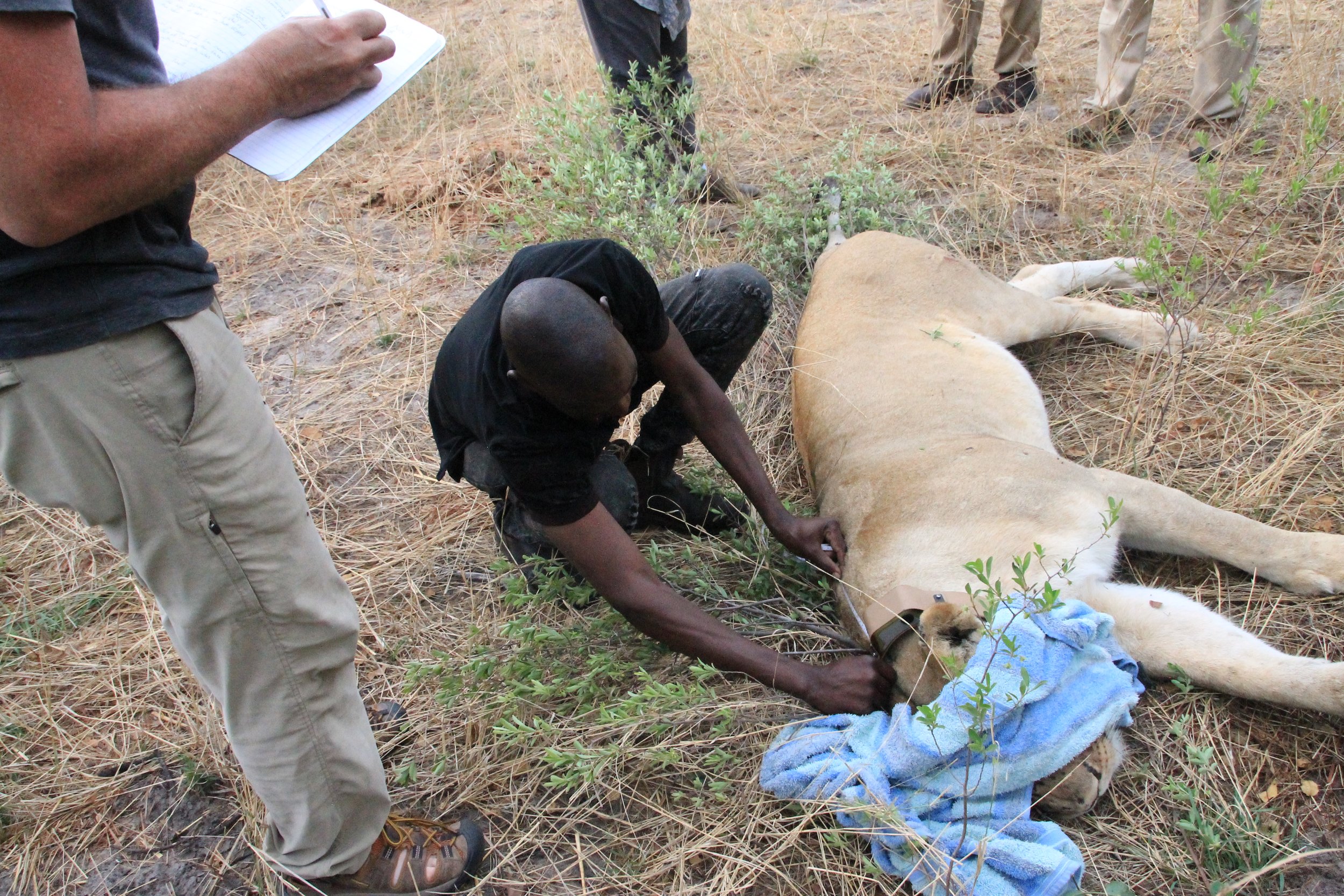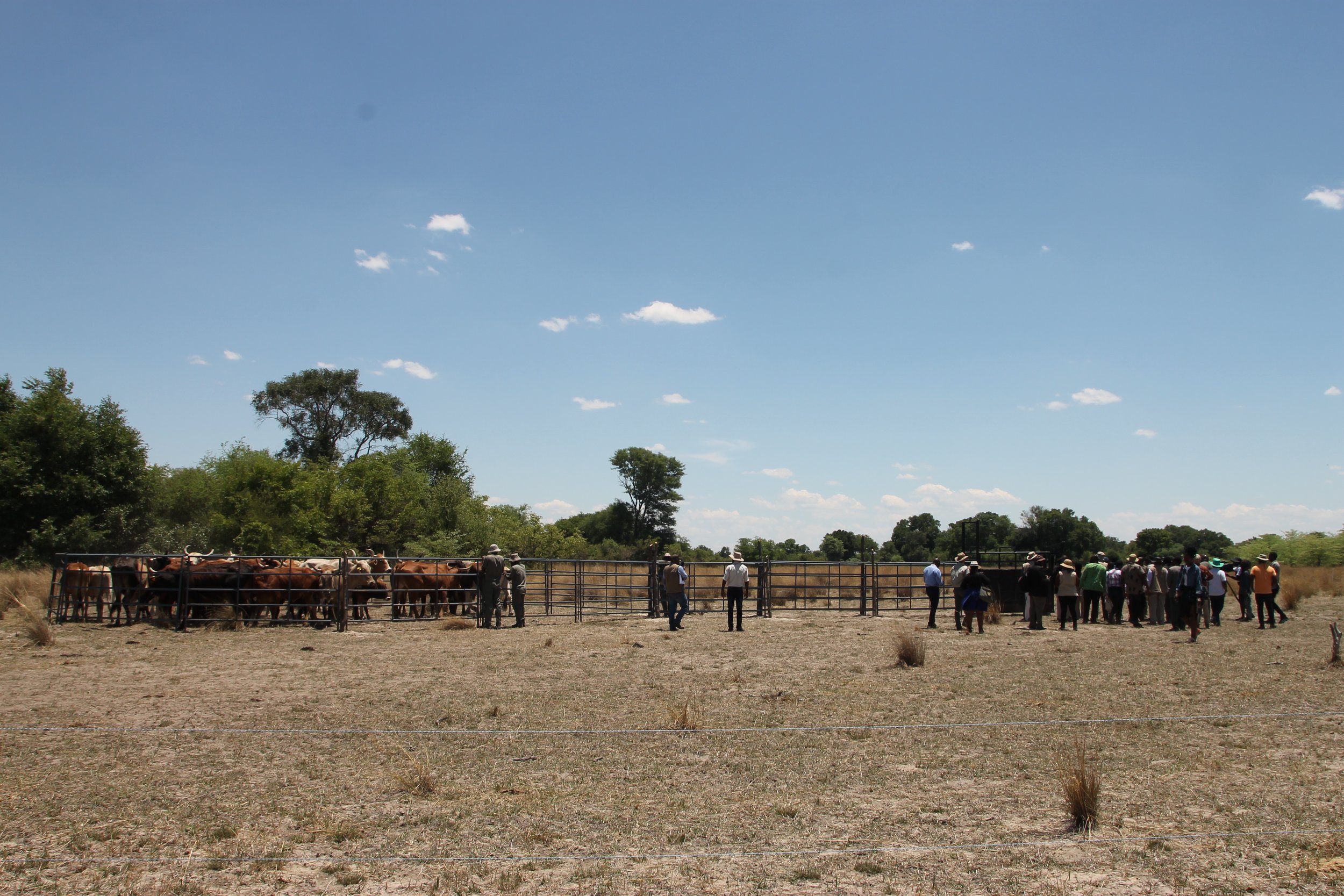As lion numbers increase, so do lion killings.
/Mayenga, on the Left, in 2016 mating with gombo
This is a hard blog to write and it has taken some time to reflect on the recent lion killings that have occurred in our area- 7 that we know about within the last 4 months. It started with the news that a farmer found an old lion collar in the grass next to Beetsha Village. Our staff immediately began making calls to find the person with the best information. He was hesitant to speak to us for fear of getting reported to the police or anti-poaching. Eventually, he brought us to the collar. It was old and very warn,but had clearly been removed by a person and we knew from the size, location and age of the collar that it was likely one animal- Mayenga. Though the collar had long stopped sending GPS locations (it was deployed in 2018), the radio signal worked and we quickly confirmed our worst fear. Mayenga, the 11 year old matriach of the "Mayenga Pride" was no more.
maynega’s collar
The loss of Mayenga stung because she was the first lioness we collared in 2015. She was young, strong and raising 6 cubs with her mother, Mamalapo. She was the last remaining tie to the start of the program and even though her collar had stopped functioning, there was satisfaction in knowing that she was likely still out there. At 11, she was one of the older females, but still had some productive years ahead of her.
Mayenga's pride had not triggered an alert in years and had taken up residence well south of Beetsha Village, but unattended cattle would reach them and there was no deterrent for feeding on livestock well into the Delta.
In November we attempted to recollar Secharo. This prime female was first spotted in 2018 near Mapula lodge with her sister. They became well known to the safari operators because they were relaxed and fed almost exclusively on warthogs. The following year, we put a collar on her and managed to do extensive follows with the females at ease around vehicles. They attempted to raise several litters without success as the tenure of territorial males remained unstable and her cubs were often collateral damage in the power struggle.
collaring secharo’s sister 11 november 2022
Then things changed. Secharo and her sister had 5 cubs towards the end of 2021 and raised them successfully through the end of this year. Five cubs! These females had figured it out and the stability of territorial males, Muka Mokokore and his mate, provided the environment for them to thrive. From the west came the largest lion of them all- Zikwerwa's mate- who battled Muka over several weeks and eventually killed him. Secharo and her sister saw the writing on the wall and fled east, as so many of our lioness' do, to avoid the inevitable confrontation with the new males. They were now refugees.
Secharo and her pride found themselves squeezed between Mayenga's Pride to the south and Beetsha Village to the north. There were few warthogs to eat, but many, many unattended cattle. They took the easy prey and started training their cubs to eat them. When we caught up with Secharo's pride to swap her collar, we found her to be uncharacteristically shy- clearly from a few hard lessons. Her sister, however, was relaxed, so we put a collar on her knowing that their pride had taken up residence in a hostile area. Good news was that all 5 cubs were still alive- though 3 were limping- and there were 3 other young adult females in the group. The pride of 2 with cubs was now 5 strong (10 with cubs). We had some tenuous optimism despite their current location and habits.
However, their luck became worse when we discovered 2 new males in the area that were clearly following the pride- either to mate with the young females or dispatch the cubs for greater mating opportunities. We collared the males to follow the situation closely. Secharo's sister and the new males were added to the Alert System and soon villagers were getting warnings.
Secharo’s sister found dead in a plowing field north of Beetsha early December 2022
The pride moved north of the villages to avoid the males and to give their cubs a fighting chance. With loads of livestock to eat, they settled in the crop fields north of Eretsha- killing 7 cows in a single day- angering the owners. We sent Pro Tomeletso, armed with fireworks to scare the lions away as part of our new Conflict Mitigation Patrol. It worked well as the lions ran from the scene but despite their initial movements to the south, they stopped and turned 180 degrees back to the north, again avoiding a certain confrontation with the males. They instead moved east towards Beetsha where Secharo, her sister and a previously unknown young male were gunned down.
The pride now is fractured and afraid without their leading, elder females.
We met with community members and leaders to discuss the issues with shooting lions. We engaged with the Department of Wildlife and National Parks to help with Problem Animal issues but it may be too late for this pride. We know there are possibly three females and the 5 cubs still killing cattle in the most hostile landscape. We will do everything we can for the best possible outcome.
Recently, the cattle farmers of Beetsha expressed desperation to start a Communal Herding Program. They have formed a grazing committee, assigned herders and pledged over 700 cattle to the program. If we can manage these cattle and reduce losses to Lions and disease while providing a better price for Wildlife Friendly cattle, we may have a chance of stopping the slaughter of cattle and Lions. Farmers in the program pledge not to harm lions to as part of their compliance to qualify for incentives.
Regional Lion numbers have doubled since the horrific massacre in 2013 and with that recovery comes increased interactions between people and Lions. Secharo's Pride has paid a heavy price, and that is crushing, but Mayenga's Pride (despite her loss) is reason for hope with 7 adults and 9 cubs living far from the nearest village. Our best chance is to maintain communication with the communities, expand our Communal Herding Program and drastically reduce conflict for a hopeful future.


















